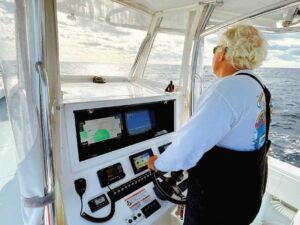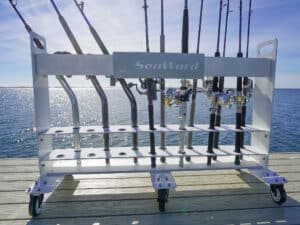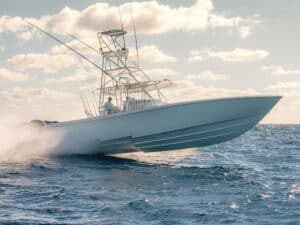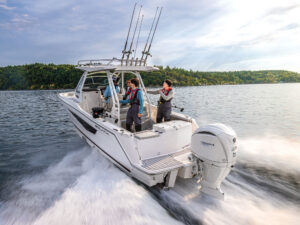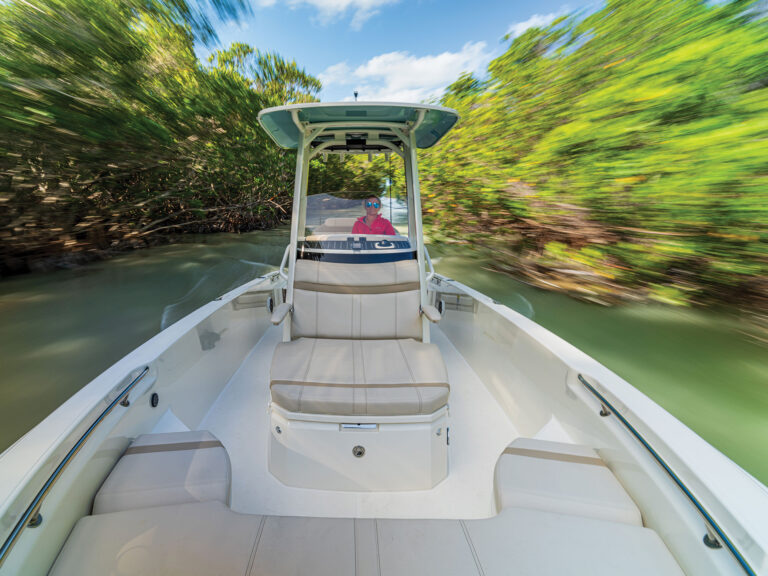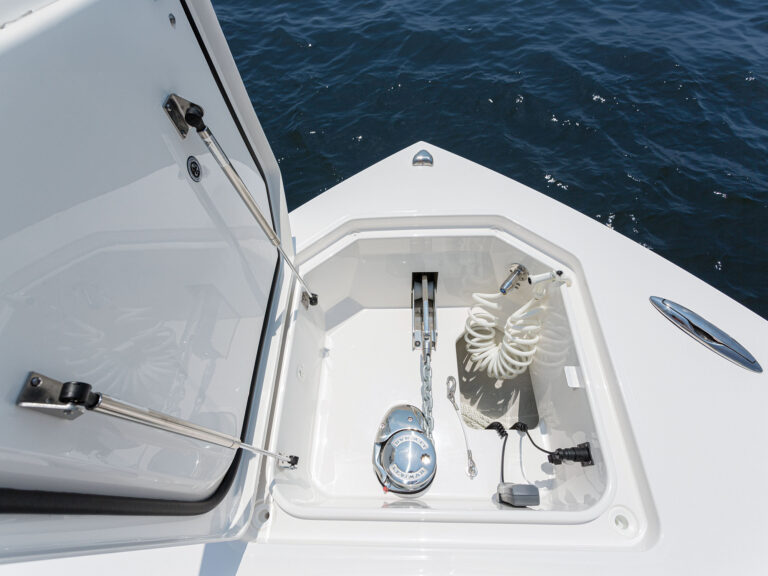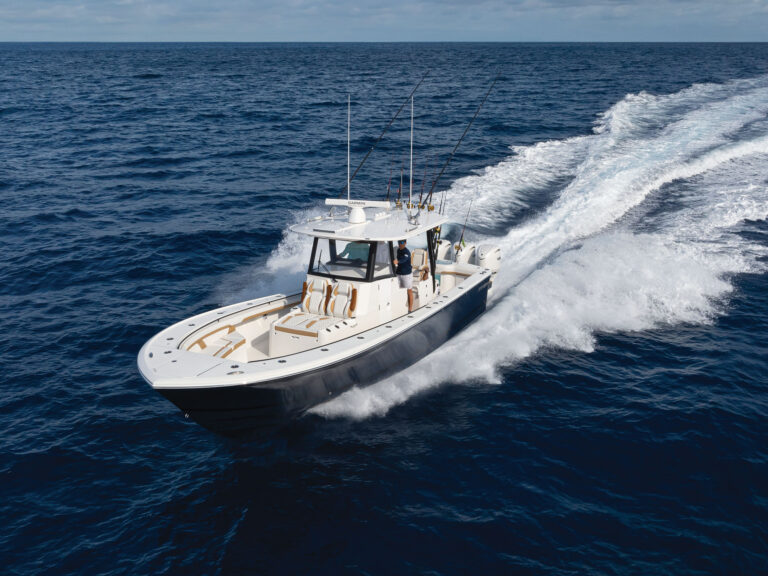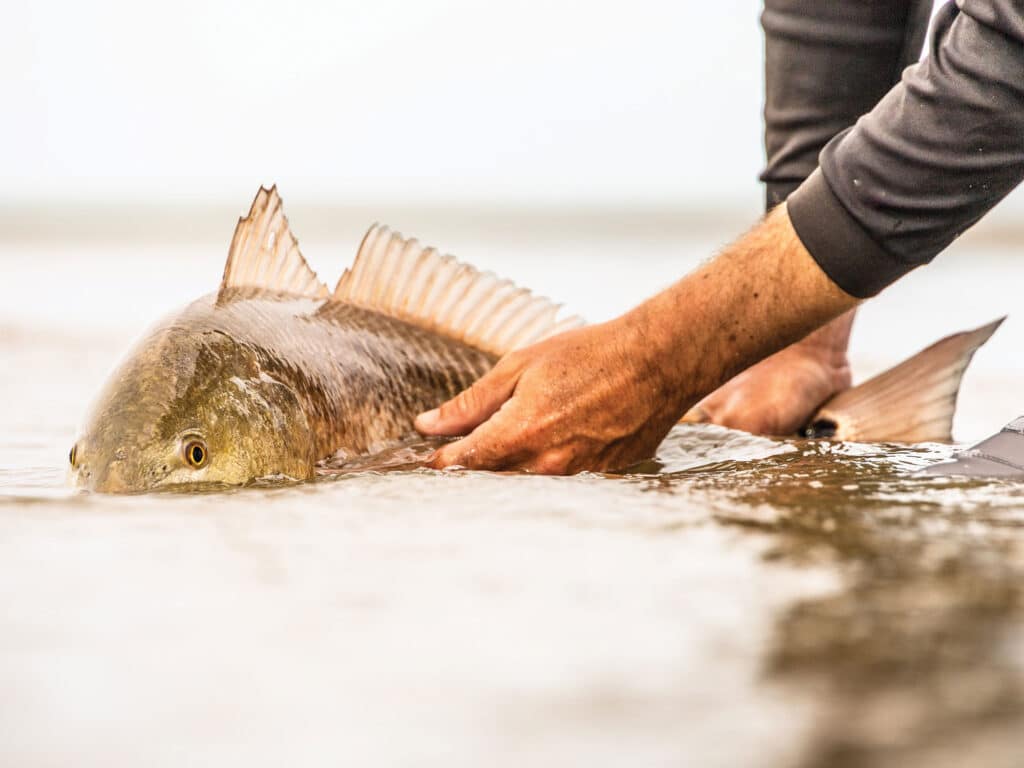
Each fall, herds of bison come down off the mountain, Canada geese fly south, and huge schools of fish swim to their winter grounds. Striped bass head for the ocean, mid-Atlantic red drum swim south, the Florida mullet migration erupts, Gulf Coast yellowfin tuna key on shrimp boat refuse, California bluefin are on the move, and experienced anglers know where to meet the migration. Get in on the action now; in a few weeks the fish will be gone.
Sand Eels and Stripers
“By October, the ocean striped bass run is in full swing,” says Jeff Lomonaco at White Water Outfitters in Montauk, New York. At the height of the run, fish move into the ocean to feed on sand eels and menhaden. Lomonaco likes overcast days with a light northeast wind. Then he looks for swirling birds or fish feeding on the surface. “If we mark the fish deep, I drop a diamond jig and work it slowly to the boat,” he says. Another option is casting 4-inch JYG SWYM or 5-inch No Live Bait Needed swimbaits. When the action is on the surface, Lomonaco breaks out topwater lures: “I like a walk-the-dog-style topwater like a Yo-Zuri TopKnock.” Lomonaco expects a better class of fish this fall.
Carolina Conga Line
As the water temperature drops into the 70s and wind picks up out of the northeast, herds of large red drum move into the North Carolina surf. Bobby Eakes, from Red Drum Tackle in Buxton, is at ground zero for the run. “We catch red drum from the beach, piers and boats,” he says. Red Drum Tackle is a few miles from The Point, the eastern tip of Hatteras Island, where surf anglers stand shoulder-to-shoulder swinging 12-foot conventional rods to launch 8-ounce sinkers and cut mullet on 8/0 circle hooks. “Keep your line tight and move down the beach with the current so you don’t tangle other anglers,” Eakes says, “We call it the conga line.” On a hard northeast blow, anglers move to the piers and take turns casting 12-foot rods with a half-pound of lead and bait from the end of the pier. Boaters target red drum on inlet shoals and back bay sand bars. “Look for wind blowing waves across the shallow bar creating white water,” Eakes says. Anchor on the deep side of a bar and fish cut mullet in the froth. With numbers of large red drum at an all-time high, Eakes expects the fall bite to start early and last longer.
Mullet-Glut Tarpon
The fabled mullet run hits southeast Florida in October, and Alec Baker, from The Snook Nook in Jensen Beach, chases tarpon along the beach and in the inlets. “Surf anglers walk the beach looking for schools of mullet and working birds to find tarpon feeding within casting distance,” Baker says. He recommends an 11-foot spinning rod to cast a large soft-plastic swimbait to tarpon. Use 40-pound braided mainline for casting distance and an 80-pound leader for abrasion resistance. Boaters search for tarpon behind the surf break. When they find feeding fish, they lob a live mullet into the school. Baker suggests placing a small float above the bait to slow it down and give it an injured presentation. Tarpon also show up in the inlet and around the bridges. Baker positions his boat near the structure and fishes a dead mullet or mullet head on a fish-finder rig.
Tuna on Shrimp Boats
They say elephants eat peanuts. Well, giant tuna eat shrimp-boat bycatch. Wayne Borne, from B&B Tackle in Belle Chasse, Louisiana, looks forward to fall, when the shrimp boats move offshore. “Yellowfin and bluefin follow the shrimp boats to feed on the discarded bycatch,” Borne explains. The fishing trip starts by negotiating with the shrimpers to purchase buckets of small fish. Then, anglers chum the tuna into a feeding frenzy before deploying baits rigged on 7/0 to 9/0 Mustad 3X Demon circle hooks and 20 feet of 100-pound fluorocarbon. Borne warns the shrimp boat bite is weather dependent. “The shrimpers need several days of nice weather to fish offshore,” Borne says.
Epic California Bluefin
Southern California bluefin tuna fishing is epic when the big fish arrive in fall. Nick Johnson, at Dana Landing in San Diego, says 40- to 80-pound resident fish give way to 120- to 300-pound bruisers in October. “They start packing away the pounds to get ready for winter,” Johnson says. The primary tactic is dangling a rigged flying fish from a kite. Johnson recommends a harness rig with a 10/0 Mustad 7196 hook in the front and a 5/0 6x Owner ST-66 treble hook stuck in the tail. The rig hangs from 3 feet of 300-pound mono, with the leader tied directly to 130-pound braided mainline. Johnson looks for circling birds or schools of anchovies before deploying his kite bait. Another popular tactic is casting 6- to 7-inch clear topwater lures at feeding fish. “We call the lure a no-see-’em,” Johnson says. The translucent lure imitates the tiny baitfish that huge tuna are eating. “Driving around with the binos looking for foaming bluefin is as good as fishing gets,” Johnson says.

